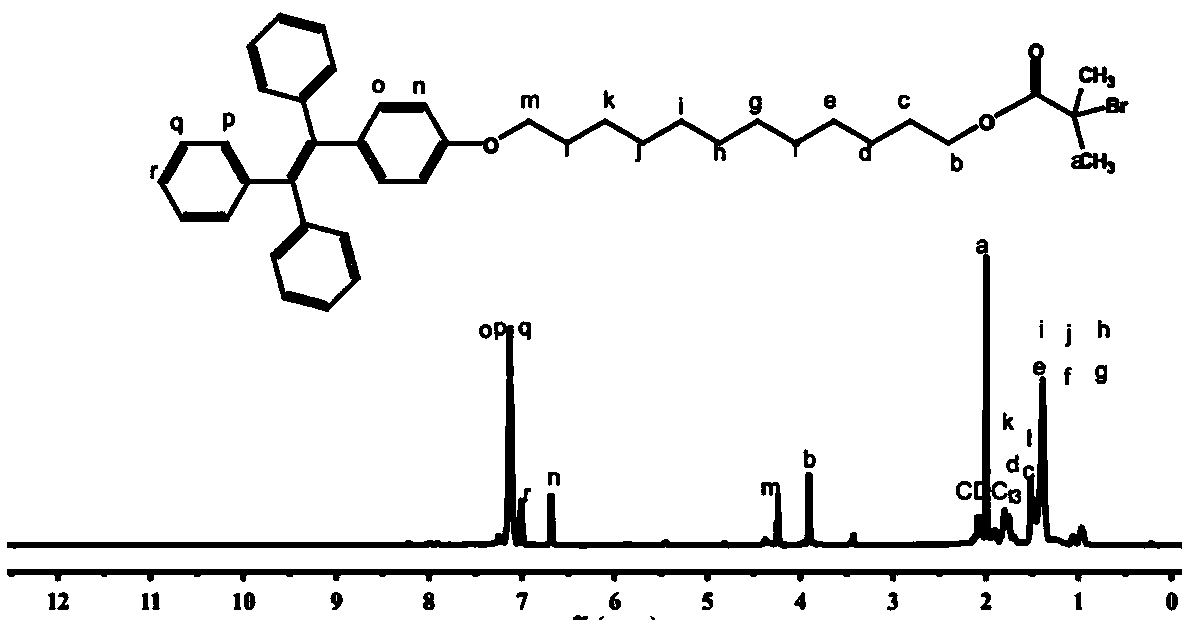Temperature-responsive AIE fluorescent polymer nanoparticles, synthesis method and application thereof
A fluorescent polymer, temperature-responsive technology, applied in the field of fluorescence imaging, can solve the problem of few reports, and achieve the effects of low phase transition temperature, obvious luminescence characteristics, and good water solubility
- Summary
- Abstract
- Description
- Claims
- Application Information
AI Technical Summary
Problems solved by technology
Method used
Image
Examples
Embodiment 1
[0051] 1) Synthesis of 4-(12-hydroxydodecyl)tetraphenylethylene (TPE-OH):
[0052] Using 4-hydroxytetraethylene, 6-bromo-1-hexanol and K 2 CO 3 The molar ratio of 1:1.2:1.2 is fed into the ratio of 4-hydroxytetraethylene (3.48g, 0.01mol), 12-bromo-1-dodecanol (0.28mL, 0.012mol) and K 2 CO 3 (1.66g, 0.012mol) was dissolved in 100mL of anhydrous acetonitrile, and refluxed for 24h under the protection of argon. After the reaction finished, the reaction solution was cooled to room temperature, then the reaction solution was filtered, the organic layer was evaporated, and finally the product was separated and purified by column chromatography (eluent: V 乙酸乙酯 :V 石油醚 =1:5), finally obtained 2.6g of light yellow solid 4-(12-hydroxydodecyl)tetraphenylethylene, the yield was about 49%.
[0053] Using 4-hydroxytetraethylene, 6-bromo-1-hexanol and K 2 CO 3 The molar ratio of 1:1:1 is fed into 4-hydroxytetraethylene (3.48g, 0.01mol), 12-bromo-1-dodecanol (0.24mL, 0.01mol) and K 2 C...
PUM
 Login to View More
Login to View More Abstract
Description
Claims
Application Information
 Login to View More
Login to View More - R&D
- Intellectual Property
- Life Sciences
- Materials
- Tech Scout
- Unparalleled Data Quality
- Higher Quality Content
- 60% Fewer Hallucinations
Browse by: Latest US Patents, China's latest patents, Technical Efficacy Thesaurus, Application Domain, Technology Topic, Popular Technical Reports.
© 2025 PatSnap. All rights reserved.Legal|Privacy policy|Modern Slavery Act Transparency Statement|Sitemap|About US| Contact US: help@patsnap.com



